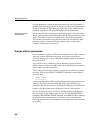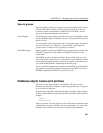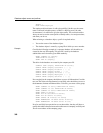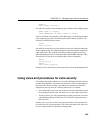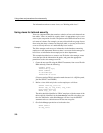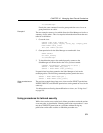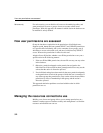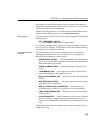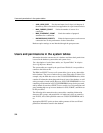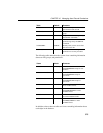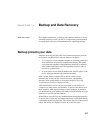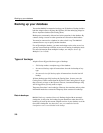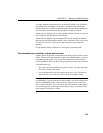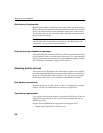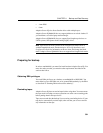
Users and permissions in the system tables
374
• JAVA_HEAP_SIZE Sets the maximum size (in bytes) of that part of
the memory that is allocated to Java applications on a per connection basis.
• MAX_CURSOR_COUNT Limits the number of cursors for a
connection.
• MAX_STATEMENT_COUNT Limits the number of prepared
statements for a connection.
• BACKGROUND_PRIORITY Limits the impact requests on the current
connection have on the performance of other connections
Database option settings are not inherited through the group structure.
Users and permissions in the system tables
Information about the current users of a database and about their permissions
is stored in the database system tables and system views.
For a description of each of these tables, see “System Tables” in Adaptive
Server IQ Reference Manual.
The system tables are owned by the special user ID
SYS. It is not possible to
connect to the
SYS user ID.
The DBA has SELECT access to all system tables, just as to any other tables
in the database. The access of other users to some of the tables is limited. For
example, only the DBA has access to the SYS.SYSUSERPERM table, which
contains all information about the permissions of users of the database, as well
as the passwords of each user ID. However, SYS.SYSUSERPERMS is a view
containing all information in SYS.SYSUSERPERM except for the password,
and by default all users have SELECT access to this view. All permissions and
group memberships set up in a new database for SYS, PUBLIC, and DBA can
be fully modified.
The following table summarizes the system tables containing information
about user IDs, groups, and permissions. All tables and views are owned by
user ID SYS, and so their qualified names are SYS.SYSUSERPERM and so
on.
Appropriate SELECT queries on these tables generates all the user ID and
permission information stored in the database.



